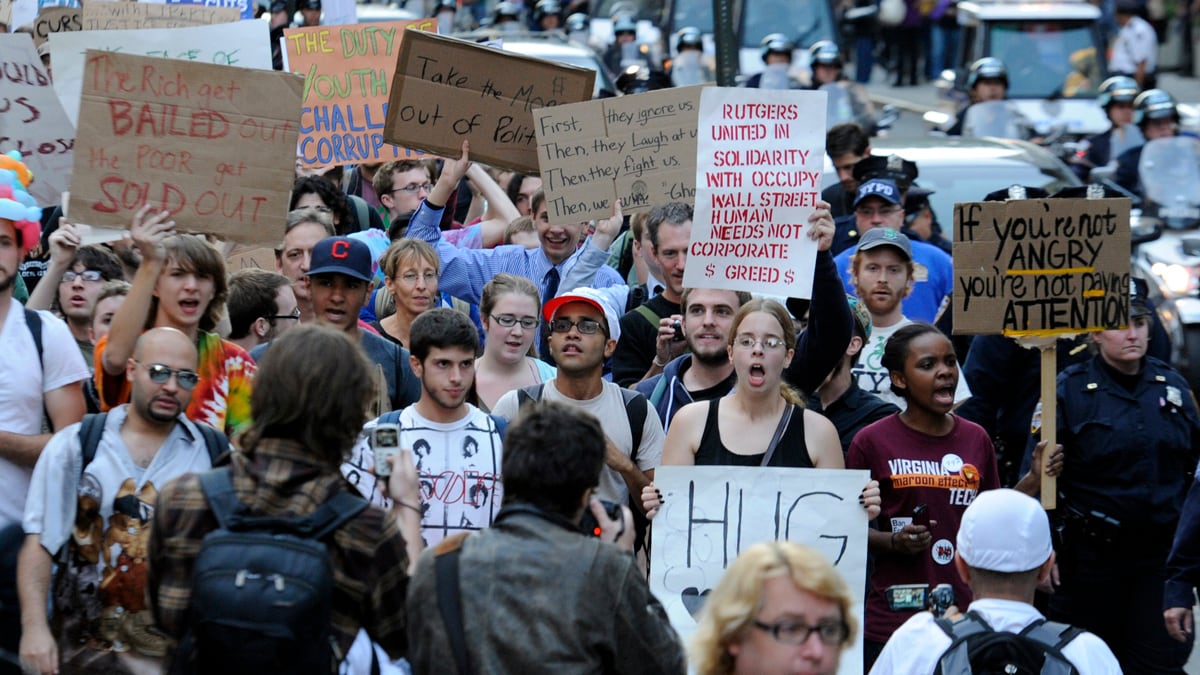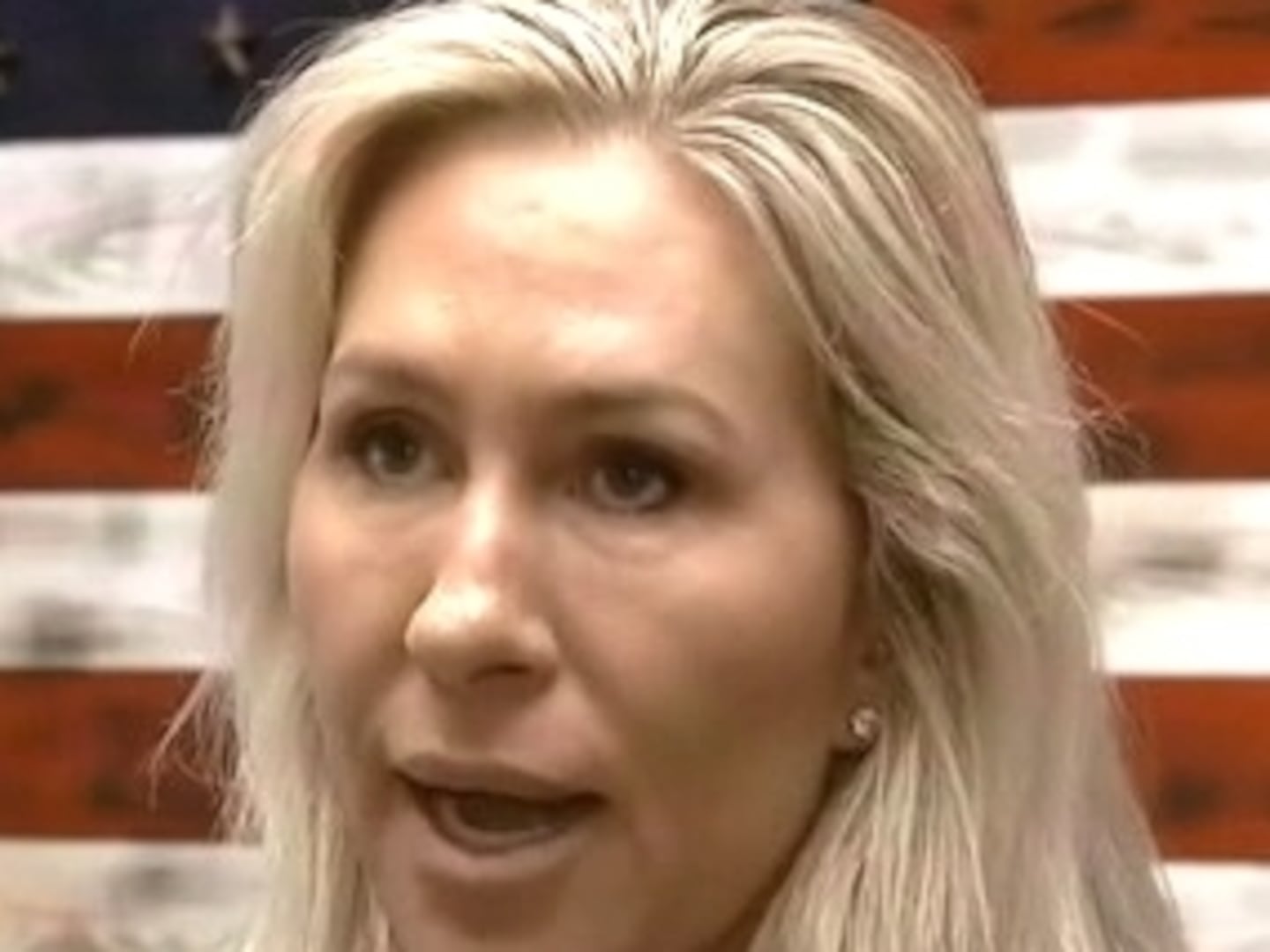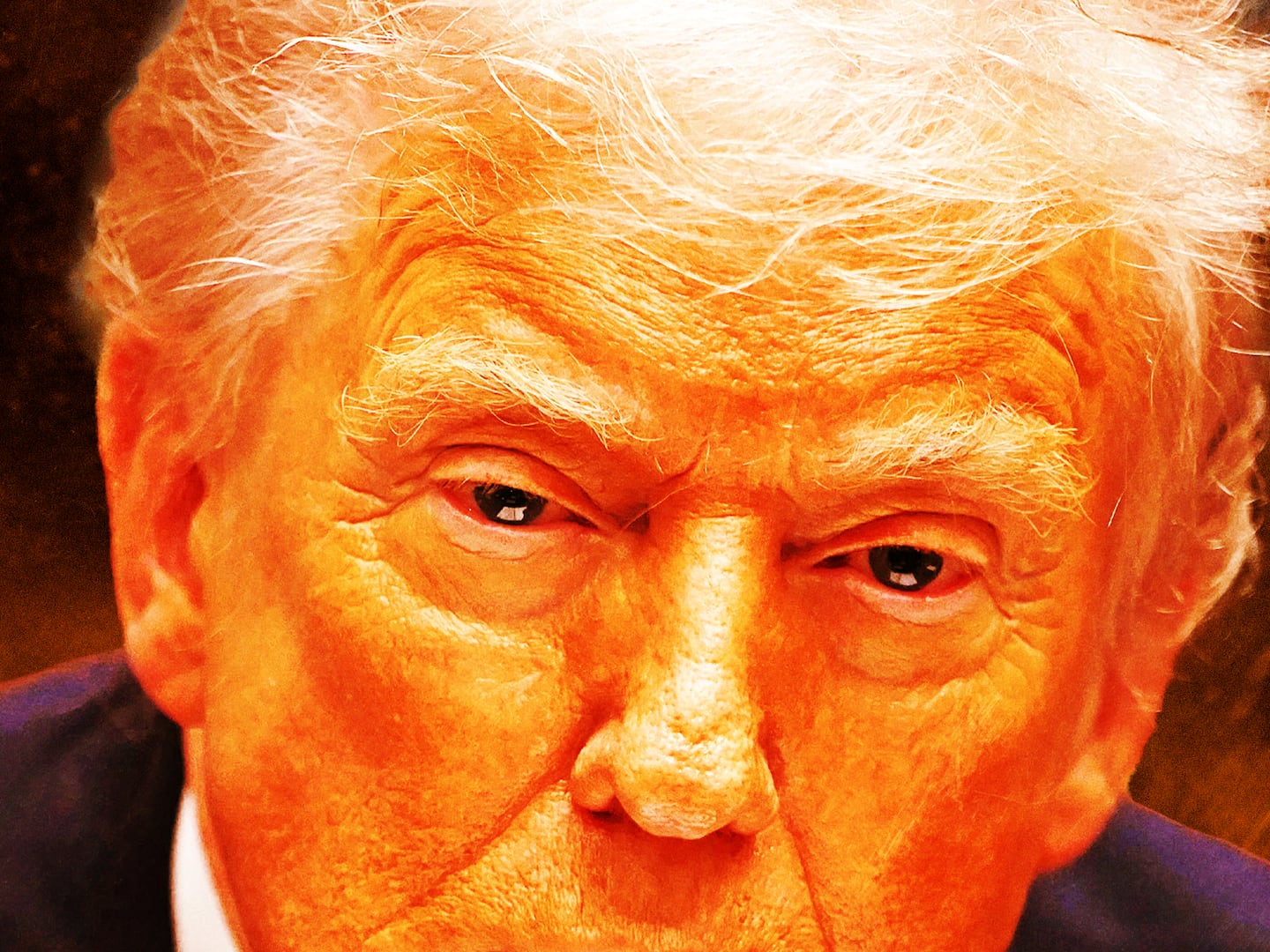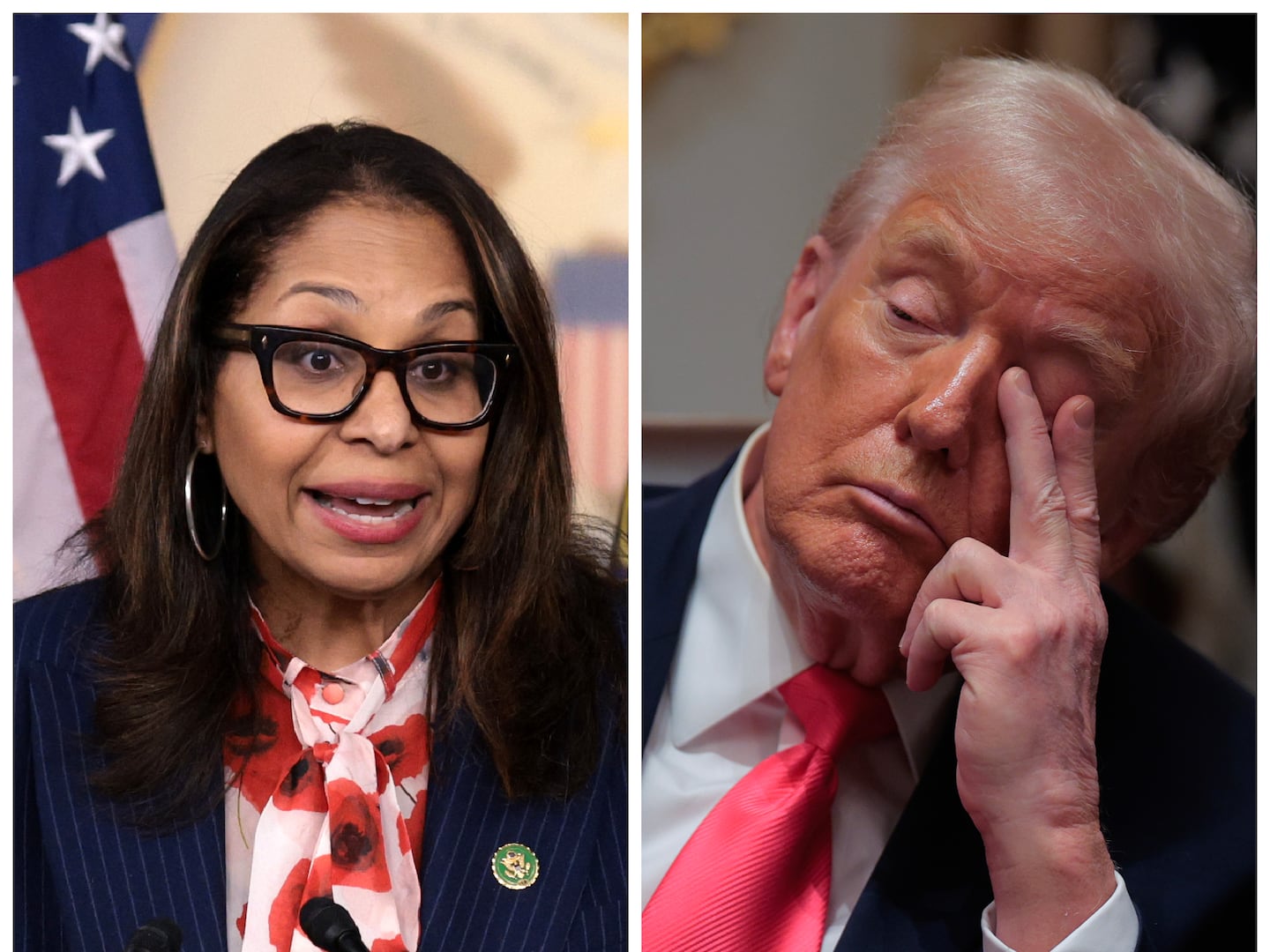We are living in a time of decentralized populist political movements, fueled by economic anxiety and magnified by social media.
As Occupy Wall Street spread into satellite protests this past week, there was an understandable impulse to impose an established narrative, asking whether this was the mirror image of the Tea Party protests.
Most of the protesters I spoke to dismissed the comparisons quickly. “The Tea Party is the opposite of Occupy Wall Street. The only thing we have in common is our homemade signs,” Eric Seligson of Brooklyn told me, as he folded anarchist pamphlets by the light of a headlamp in Zuccotti Square on Friday night.
One of the ironies of the coverage of the Wall Street protests to date is that the right is condemning them in almost the same terms as the left condemned the Tea Party movement, and the left is likewise angrily arguing that media bias is behind anything less than uncritical coverage.
For example, here’s Republican Majority Leader Eric Cantor on Friday. "I'm increasingly concerned about the growing mobs occupying Wall Street and other cities around the country … Believe it or not, some in this town [Washington, D.C.] have actually condoned the pitting of Americans against other Americans."
And here’s Eric Cantor rallying the crowd at 2009’s Values Voters Summit: “Right now, millions of Americans are waking up, realizing that they don’t recognize their country anymore.” Down the hall, his conservative compatriots were hosting seminars with unifying titles like “Thugocracy: Fighting the Vast-Left Wing Conspiracy” and “ObamaCare: Rationing Your Life Away.” Double standards and situational ethics are the way the hyperpartisan game is played.

But it is a two-way street. Liberals loved the telling snapshots of the more unhinged signs at Tea Party rallies—among those I saw were: “Don’t make the U.S.A. a Third World Country—Go Back to Kenya,” “King George Didn’t Listen Either,” “Obama Lied, Granny Died,” and “Don’t Touch My Medicare.” But now they are claiming that similar snapshots of the messages penned at the Occupy Wall Street protests are taken out of context and unrepresentative. Among the signs I’ve seen across the street from Ground Zero are: “How Long Can the Corporate-Military Occupation of Earth Go On?” “Corporatism is Fascism,” “9/11 Truth,” “We are Tunisia, Egypt, Greece, Palestine, Spain, Yemen, Chile, Bahrain, Syria, Bolivia and Libya.” That’s a lot of context.
It’s an old trick: populist rallies gain intensity by encouraging a loss of perspective, fueling anger with apocalyptic urgency. In the case of the Tea Party, conservative activists seemed to believe that losing the 2008 election was like living under tyranny. And today, too many in the Occupy Wall Street crowd toss around comparisons to Arab Spring uprisings, where state-police dictatorships are still murdering peaceful protesters everyday.
So here’s a mathematically measurable reality check: Zuccotti Square—the official name of what is known locally as Liberty Park—is just 26,000 square feet, or roughly half an acre. Inside, there is a food line, clothes bank, lending library, and a lot of space taken up by sleeping bags. The numbers of protesters swell to the thousands during the day and on weekends, but the square still defines the essential contours of the protests, housing a few hundred earnest souls overnight, as tourists and journalists circle.
Occupy Wall Street protesters claim that there are 200 sympathetic satellite protests in 12 states around the country, including one that attempted to occupy the Smithsonian National Air and Space Museum on Saturday. But it is still far less than the 346 Tea Party protests documented around the country on Tax Day 2009, drawing more than 300,000 people, including 3,500 in lower Manhattan and 15,000 in Atlanta. And it's safe to say that if any of the Tea Party rallies turned violent and clashed with the cops—as Occupy Wall Street did on Wednesday night, trying to storm police barricades—there would have been intense and appropriate condemnation.
There is no question that the Tea Party benefitted enormously from groups like Americans for Prosperity and FreedomWorks underwriting organizational costs—and Fox News running 100 near-PSAs beginning a week before the protests. But likewise, support from some 39 unions and community organizations have helped bulk up and organize the Occupy Wall Street crowd, and now select MSNBC shows and Current TV seem to be competing to see who can outpromote these protests.
Just as the Tea Party initially pushed the idea that they were an independent movement angry at both Republicans and Democrats, there is a drive to try and describe the Wall Street protests as being beyond partisanship. They are decidedly left wing, as opposed to simply liberal or even Democrats. Among the pamphlets I’ve been handed while walking through the crowd include primers on “Public Anarchism,” a brief autobiography of Emma Goldman, and “Women in the Spanish Revolution.”
“The Tea Party is phony, a fake grassroots. They're supported by the Koch Brothers and Fox News. They're not representative of workers. They're mostly disenfranchised white people,” Eric Seligson told me, gesturing to the young and comparatively diverse crowd. “Maybe some of them are losing their jobs but their anger is misdirected, because they're being taught to side with those who crashed the economy,” added Sara Quinter, from Queens, N.Y. “Instead of identifying with their fellow 99 percent, they're thinking they should identify with the 1 percent.”
But at least one man in the crowd, wearing an "End the Fed" T shirt and a tricorn hat argued for common cause with the Tea Party. “I believe there's a lots of overlap between the message of Ron Paul and Occupy Wall Street,” said Gabriel Brown of Long Island. “We're against the war. We're against the Federal Reserve. We're against the police state and the Patriot Act. I think there's lots of unity here. They need to start coming down here and start being in the marketplace of free ideas.”
The “marketplace of free ideas” is a great phrase that is needed these days—an open civic conversation about societal problems and policy solutions. But populist protests quickly polarize into us-against-them, demanding all-or-nothing fealty, increasingly enforced by partisan media. Healthy skepticism, a sense of humor and independent perspective are essential but endangered by these dynamics.
The Tea Party protests began as fiscal-conservative protests against the generational theft of deficits and debt, but a serious strain of Obama Derangement Syndrome soon emerged. The problem in trying to talk about the Tea Party at the time was that the right only recognized the principled fiscal-conservative protests, while the left could only see the fever of Obama Derangement Syndrome—civic conversation became almost impossible across that divide.
Just as the excesses of the Tea Party obscured the real issue of dealing with the deficit and the debt, making common ground more difficult to achieve, in these early weeks of the Occupy Wall Street protests, we are seeing a rush to the ramparts. This threatens to obscure the very real reasons people should be angry at our screwed-up financial system that led to corruption and collusion and economic malpractice. We should have a fact-based debate about growing gaps between the super-rich and middle class in America, reinstating Glass-Stiegel or whether Harry Reid’s millionaire’s tax is the best way to pay for the Jobs Bill while beginning to pay down the debt. It’s not insensitive to say that comparing the U.S.A. to dictatorships while banging away in a drum circle isn’t the best way to get taken seriously.
What gets lost in the pendulum swing of populist protests is a sense of citizen responsibility to actually solve problems in a democratic republic—defining the common ground that exists and then building on it. In the current polarized political environment, that just might be the most revolutionary idea of all.






